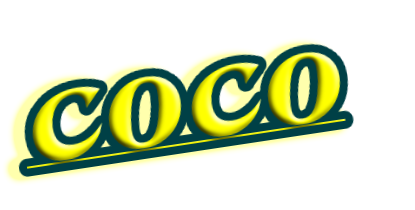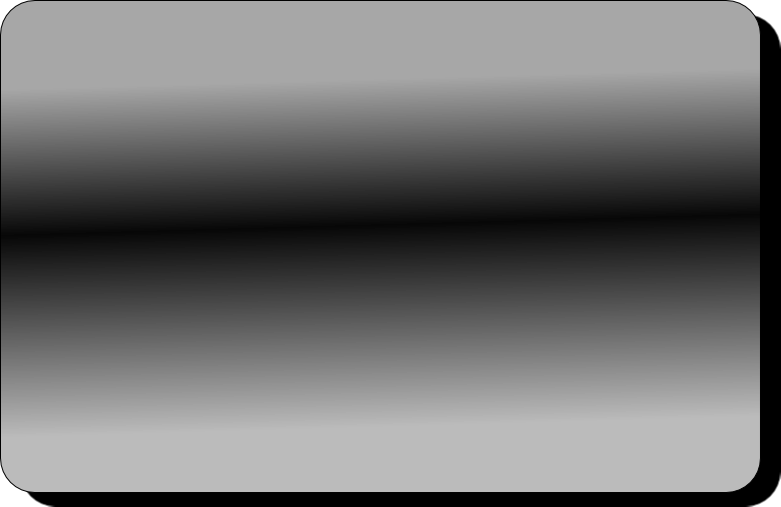
Copyright © 2011-2023 Coco Hotel. All rights reserved.

Coco Hotel
151 A. Martinez,
Sosua,
Dominican Republic
"WELCOME HOME" - The place to stay when visiting Sosua
















The Dominican Republic has several international airports. East of Santo Domingo is Las Americas International and in the city is La Isabela. For destinations on the North coast, people generally fly into PUERTO PLATA International Airport named Gregorio Luperon which is located just 11 miles East of Puerto Plata. Punta Cana. Another popular connection for U.S. travelers is to the international airport Santiago de los Caballeros, however some of those flights arrive in the middle of the night to early mornings. Since the beginning of 2007 the international airport EL CATEY in Samana has opened but not operating to its full capacity yet. As of 2008 there will be more airlines flying to El Catey which will make it so nice for arrivals going to Samana and Cabrera. All of these airport locations help facilitate and ease your traveling plans weather you visit to investigate investment possibilities or wanting to vacation on one of the North coast of the Dominican Republics beautiful sandy beaches.
The Dominican Republic's beaches are widely celebrated as being among the world's best, and for good reason. Here, more than 1,000 miles of golden sugar-colored sand is gently lapped by warm waters so clear and blue one has to see to believe. Depending on location, the beaches offer a gentle lullaby for an Oceanside nap or enough wind to keep a Technicolor kiteboard adrift. Our favorites for a relaxing beach holiday are Sosua, Cabarete Playa Grande, El Caleton Beach.
Light weight sports clothing and casual dress is recommended unless you are going to the mountain regions. (Bring a sweater) It's always handy to bring a fold up umbrella or compact plastic rain coat as sometimes we have afternoon showers but the umbrella is the preferable option as you can use it for shade when needed.
The national currency of the Dominican Republic is the Dominican Peso. In the tourist areas you can also pay with American Dollars as well as travelers checks. The ex-change rate check on line for the current rate
Credit cards like Master Card, VISA and Eurocard are accepted in most mid-sized businesses nationwide or go to about any bank where you use the ATM machine. It’s safer to actually go in the bank to withdraw money as quite often the ATM’s can be unreliable with money not being given out but the funds still withdrawn from your account. If this happens, take a note of the bank address, the time and inform your bank what has happen as soon as you can. The local bank will not be able to help you with this problem and this is the usual response you get. Money exchange shops are common but the exchange rate will fluctuate between exchange shop so be aware and shop around.
The Dominican Republic, also know as Hispanola is hot and tropical, with little seasonal variation in temperatures, which average about 80°F (27°C). Seasons can, however, be determined by rainfall, with November to January being the rainy season on the north coast, while May to November is the wettest month in the south of the country. From Sosua to Cabrera we are surrounded by mountain ranges and we receive the trade winds from the East for a perfect climate.
These requirements are subject to change. Check with the embassy or consulate in your home country before you depart.
Canadian citizens: A passport valid for at least six months beyond the intended date of departure, a return or onward ticket, and a tourist card are required for visits of up to 60 days.
EU citizens: A passport valid for at least six months beyond the intended date of departure, a return or onward ticket, and a tourist card are required for visits of up to 60 or 90 days.
U.S. citizens: A passport valid for at least six months beyond the intended date of departure, a return or onward ticket, and a tourist card are required for visits of up to 60 days.
Others: Nationals of countries not listed above may or may not require a visa; check with the nearest Dominican Republic embassy or consulate for further details about entry requirements.
Note: Tourist cards may be purchased upon arrival or from a Dominican Republic consulate in one's home country. Some airlines include the tourist card in the price of their tickets. If you need to purchase a tourist card, it will cost you US$10 for the entry card and US$20 for departure tax when you leave which you will be asked to pay at the departure gate as of October 2009. It is therefore advisable to always carry US currency with you in small bills.
Whether you're an experienced diver, or just beginning, you're bound to enjoy underwater exploration, either snorkeling or diving in the reef areas found off the north coast of the Dominican Republic. Take to the water and enjoy Sosua's many reefs and wrecks or take a day trip to Rio San Juan just over a hour away for a short boat ride thru beautiful Gri Gri Lagoon and out the mouth of the ocean. You can see a spectacular array of colorful marine life in these incredibly clear waters. In some areas, you can dive to underwater caves or shipwrecks that have been at the bottom of the sea for hundreds of years. How about a tropical vacation home here where you can go out and enjoy some of life's pleasures.
Generally the electricity operates at 110 Volts/60 Hertz (like in North America) but voltage irregularities can be quite common in the Dominican Republic - sometimes providing less, sometimes providing surges of far more. For this reason, expensive appliances and computers should have surge protection if they are going to be used here. Appliances from countries that use more voltage, for example, 220 volts, will require converters or adapters.
This is something to think about and plan for when building your dream home on this tropical island and not to fear most home rentals and hotels have surge protectors to protect your computers.
The Dominican Republic has some of the most beautiful golf courses in the Dominican Republic. Located all over the north coast you will never be far away from a course with one of the most beautiful being Playa Grande Golf Course. This is a Robert Trent Jones 18-hole golf course that some say is the world class of the Dominican Republic. It has ocean views on every hole and 10 holes run along the shore. Most are reasonably priced with the Playa Grande Golf Course being one of the most expensive and distant from Sosua but, make it a family day out with great snorkeling and diving from Gri Gri lagoon.
The most popular pieces are the ones that incorporate either Larimar or Amber , both of which are mined in the Dominican Republic. Larimar, unique to the Dominican Republic, is mined in a volcanic mountain range in the south of the country and is polished to bring out its varied shades of turquoise blue and green, beautifully matching the colors of the sea. Amber is the bronzy, orange-hued resin that has hardened after millions of years. Amber is quite prevalent in the Dominican Republic. The most prized, and therefore costly pieces, incorporate fossils of small plants or insects that collected in the resin before it hardened, called 'inclusions'. Pricing of jewelry items incorporating Larimar or Amber varies depending on the type/quality/size of the piece, the type of metal used, and the design. The specialty jewelry and gift shops offer more high quality products, incorporating the real gems/stones, silver or gold, at accordingly higher prices. A great gift to remind you of the piece of tropical paradise you left behind till your next stay.
Coffee is grown in the Bani and Cibao Altura area of the Dominican Republic, and is known for its full body, low acidity and rich flavor. The economical price of coffee makes it an ideal gift/souvenir to bring home. The most popular brand is the white bagged Santo Domingo brand. Can you picture yourself sitting on your terrace of your beach home sipping on a fresh cup while the sun comes up....
Cultivated by the Taino before the European arrived were pineapples, papaya, tobacco and peppers. Mango's, bananas, coffee and sugar cane arrived after the arrival of the Spaniards. The different climate zones are responsible for the variety of local fruits. In the Sosua area you can go to the little fruit stands on the road and buy fresh everyday or wait for a small fruit truck to pass you by on the road. Fresh fruit is always available no matter where you go in the Dominican Republic
The Dominican Republic is the ideal place to celebrate your wedding. Surrounded by palm trees, sunshine, warm turquoise ocean and tropical flowers, live music, you will find the perfect balance between privacy and a friendly atmosphere.
You will need two witnesses holding valid passports who can be traveling with you or you can ask local hotel staff to witness your wedding.
The following documents are required to get married in the Dominican Republic. Note that legal transcripts of birth certificates, single status affidavits and divorce certificates need to be prepared in the country where the documents were issued.
1. Original birth certificates. Send two photocopies.
2. Valid and signed passports. Send two photocopies of the main page.
3. Notarized Statutory Declarations of Single Status done according to the sample. Bring or send one original and one photocopy. Please see attached sample of a Statutory Declaration of Single Status.
4. Divorce certificate or death certificate (if applicable). Send original or notarized photocopy and two simple photocopies. In both cases, a minimum waiting period of ten months applies before a woman can remarry.
The 3rd and 4th documents are translated and legalized by the Dominican Republic Consulate. The birth certificates have to be translated into Spanish as well.
Bus is the best way to travel longer distances in the Dominican Republic. You can expect a decent service from the national carrier Caribe Tours. They cover dozens of destinations across the country (and even to Haiti) and have a quite modern fleet. Buses are air-conditioned. In the capital Santo Domingo the Caribe Tours terminal is located in:
27 de Febrero esq. Leopoldo Navarro
Santo Domingo, R.D.
Tel. (809) 221 - 4422
Just an example: one of the longest routes across the island, from Santo Domingo to Puerto Plata:
Public Cars (Carros Públicos)
The Public Cars (Carros Públicos–Conchos) are privately owned passenger cars that transit a specific route daily and passengers pay a certain fee with the convenience of stopping anywhere. This comprises one of the main ways of transportation inside the capital city of Santo Domingo, as well as other major cities. This system though is not very reliable and lacks discipline, the high number of public cars that transit the roads, and the fact that they do not lend itself to regulation or central control, which causes frequent transit problems among city roads. They may also be somewhat uncomfortable, since they try to fit as much people as possible inside them. As a standard, a 4 person sedan (driver included) usually caries 6 passengers, twice the amount for which they were designed